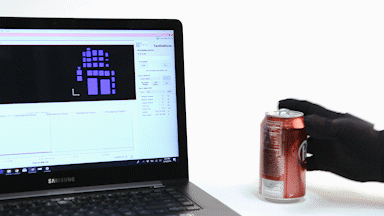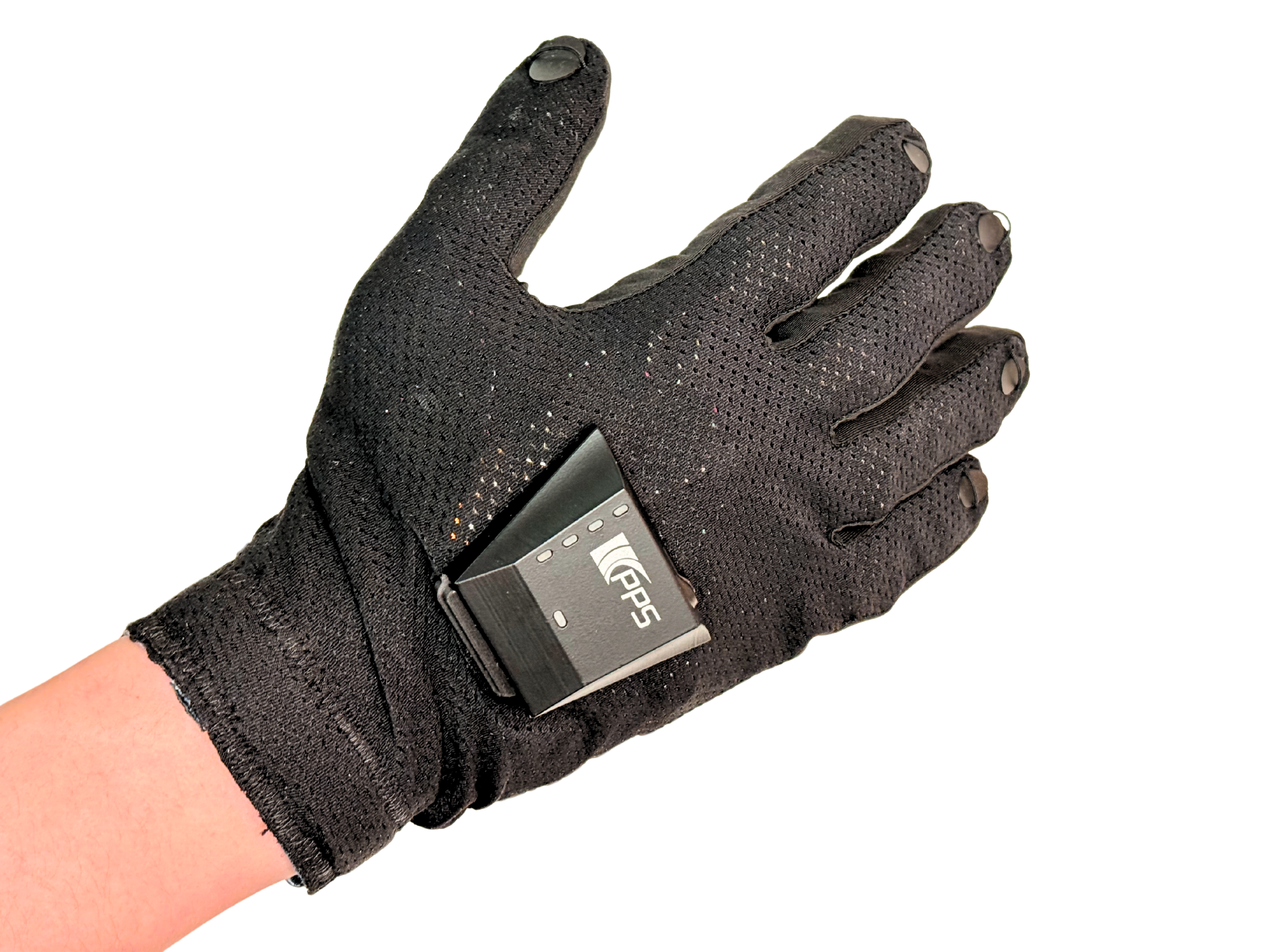

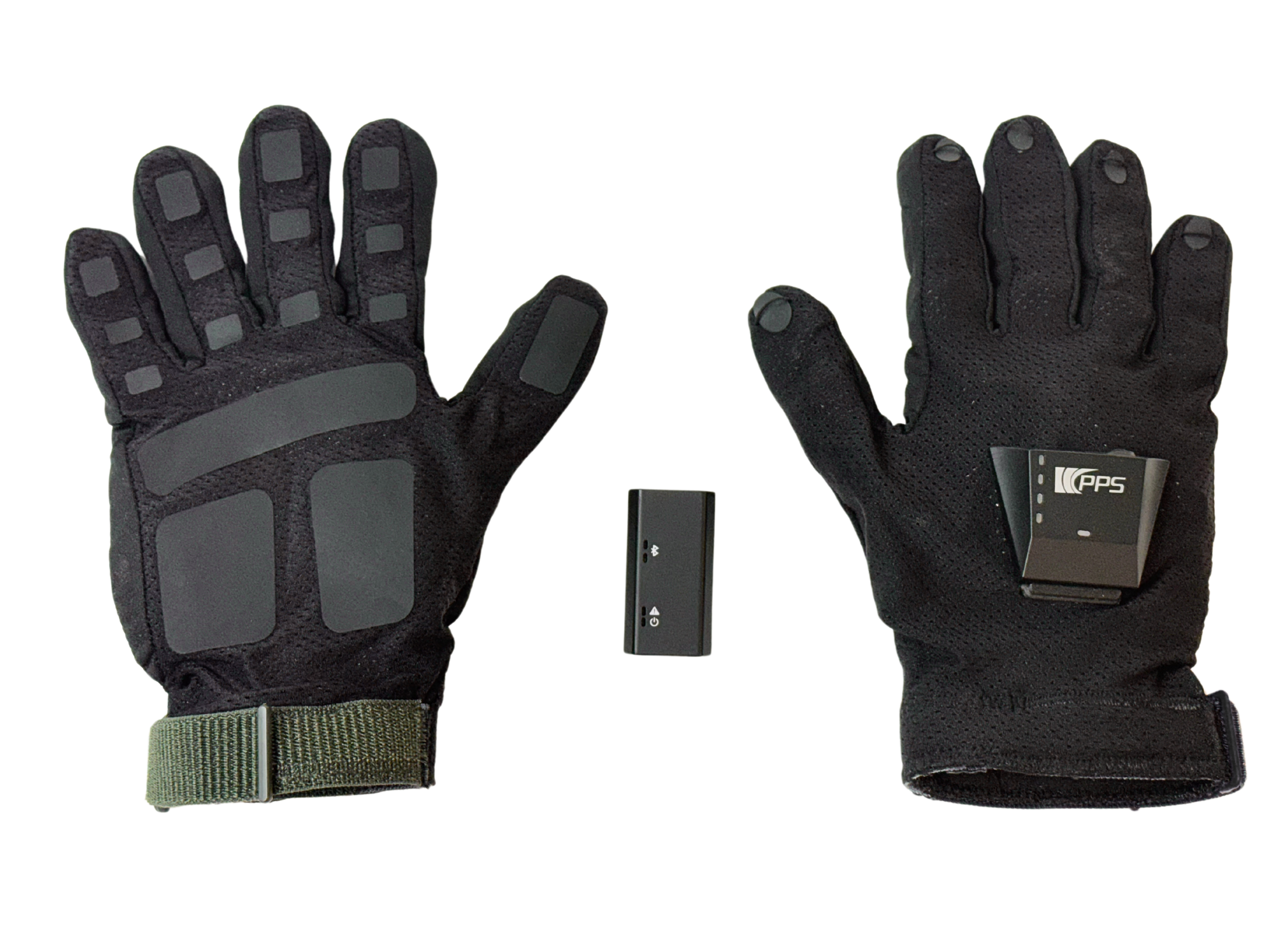
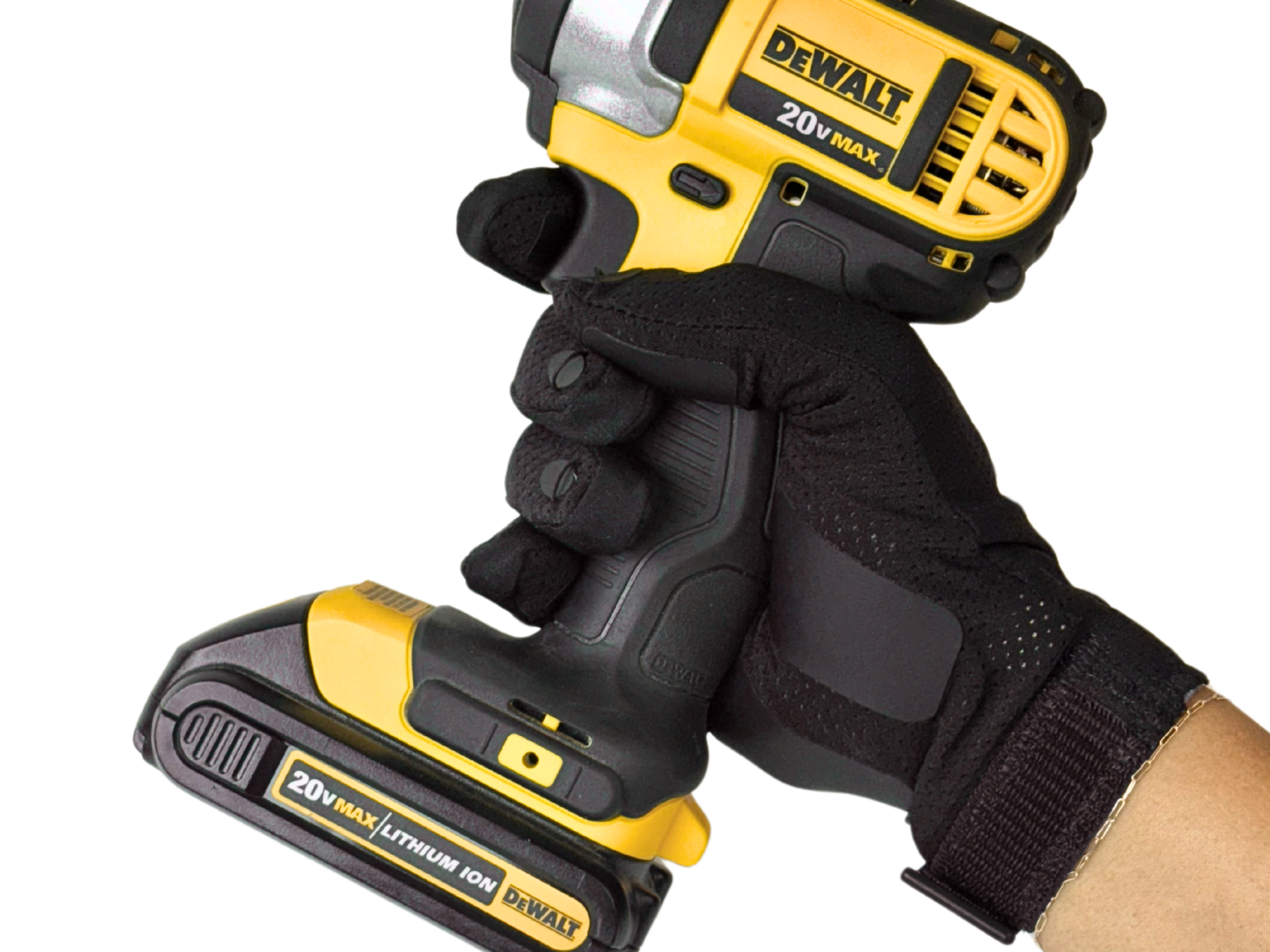
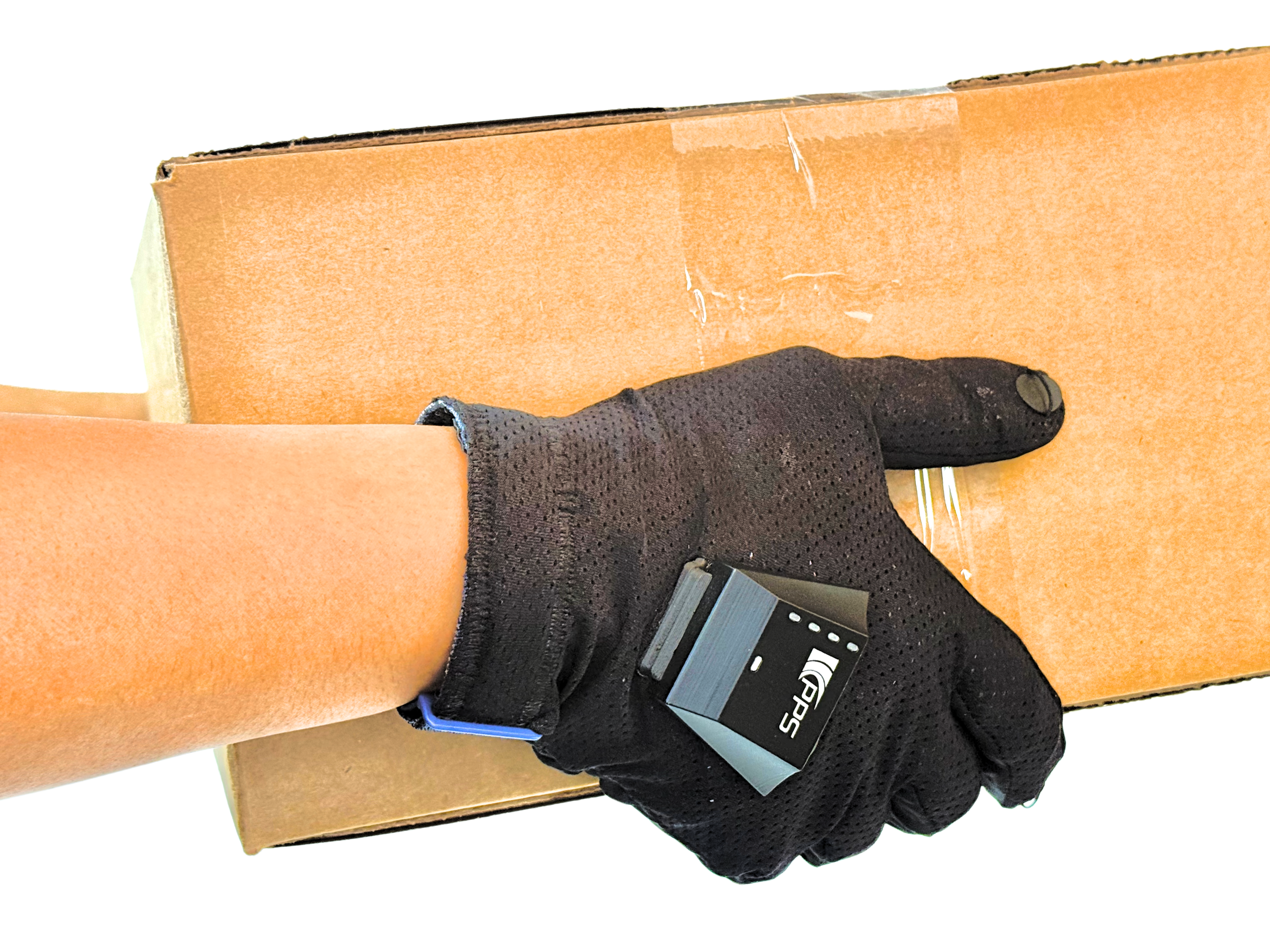
Tactile Gloves: Hand Pressure And Force Measurement
The PPS TactileGlove is a state-of-the-art pair of tactile pressure sensor gloves designed for accurate and repeatable pressure and force measurement across the hands, fingers, and palms. With 65 embedded tactile sensors throughout each glove, users can monitor hand movements and grasp forces naturally and in real time, even during complex or repetitive tasks.
This capacitive pressure sensing and mapping system allows researchers and engineers to accurately measure pressures applied to and exerted by the hands during various tasks. The wireless and battery-powered design creates an organic test environment, enabling full range of motion and ensuring the gloves do not impede natural hand motion. As the only glove sensor system on the market offering this level of flexibility, it supports high-resolution data collection with visual feedback that reflects real-world activities and interactions.
Sensor Glove Features:
Designed to ensure a natural test environment using a flexible, wireless sensing glove system
Provides the comfort and mobility of regular gloves with no adhesives or obstructive wiring
High-resolution tactile sensors detect even low pressures (0.1 oz / 3g)
Battery-powered and Bluetooth-enabled for full mobility during testing.
Supplied in pairs (Left + Right) with sizes available in Small, Medium, Large and newly X-Large. See sizing chart
Product Description
The TactileGlove is a breakthrough in wearable sensor technology, combining flexibility with advanced force and pressure sensing. With 65 individual sensors embedded across critical sensing areas of each glove, the system provides reliable data on finger, palm, and grip pressures during use. This allows users to track how the hands interact with objects, tools, and devices with exceptional accuracy.
Data from the TactileGlove pair is captured via Chameleon Software, which provides both numerical readings and visual representations of hand forces and contact points. The ability to capture tactile interactions supports deeper insight into hand movement, touch precision, and user response to physical interactions. This allows for real-time analysis, ergonomic assessment, and system feedback across a wide range of applications including tool design, rehabilitation, and human factors research.
Applications
Understand and optimize worker exertion while performing hand actions. Measure force and exertion required to cutting metal with shears, strip wire, perform fine assembly tasks, and more. Understand points of high exertion within your process, and optimize your labor force to reduce potential injury.
Manufacturing Safety & Workers’ Comp Assessment:
Understand work-related tasks that involve high hand forces to help prevent injury
Visualise stress points to optimise task performance and reduce injury risk
Determine grip force used in repetitive tasks such as shearing, wiring, or fine assembly
Analyse fine motor grip force in precision tasks like dental or surgical tool use
Assess whether tool modifications reduce user effort and improve ergonomics
Quantify hand strength to support rehabilitation and return-to-work evaluations
Product Ergonomic Design:
Quantify natural grasp forces across the hands and fingers
Determine upper and lower limits of forces generated by the hand
Quantify effort to use tools for human factors & ergonomic designs
Correlate “feel” of a product in response to controlled design changes
Analyse differences in hand interactions between competing product designs
Grip Force In Shear Usage
Quantify Grip Force
Tactile Glove System Components
TactileGlove Pair
BLE Module and Housing
BLE USB Dongle
USB Charging Cable
Inside the tactile gloves
Sixty-five (65) sensing elements embedded within the glove enable accurate pressure mapping across the most important areas of the hand.
Tactile Glove System Specifications
Glove Sensor Specifications
| Sensing Elements | 65 elements of 5.0 mm × 6.0 mm |
| Full Scale Range | 80 psi (55 N/cm²) |
| Maximum Force | Thumb & Finger tips - 70 N Pinky tips - 28 N |
| Thickness | ~ 2.6 mm |
| Signal-to-Noise (SNR) | > 500:1 |
| Gain Non-Repeatability | <3% |
| Linearity | > 98% |
| Minimum Sensitivity | 0.04 N |
Electronic Specifications
| Scan Rate | 50 Hz Single or 25 Hz Pair |
| Interconnection | Wireless Bluetooth Low Energy (BLE) – minimum 5 m range |
| Battery Life | > 2 hours |
| Operating Temperature | 5°C to 40°C (static environment) |
EXAMPLES
RESEARCH ARTICLE - Computer vision and tactile glove: A multimodal model in lifting task risk assessment - September 2025 - IEEE Applied Ergonomics
RESEARCH ARTICLE - Data-Driven Ergonomic Risk Assessment of Complex Hand-intensive Manufacturing Processes - March 2025 - IEEE Communications Engineering
WHITE PAPER - Interpreting TactileGlove Data for Practical Use Cases - Published 2024
WHITE PAPER - Quantifying Hand Ergonomics With The Tactile Glove - Published 2021
RESEARCH ARTICLE - Investigating Gripping Force During Lifting Tasks Using a Pressure Sensing Glove System - February 2023 - Science Direct Applied Ergonomics - Download
RESEARCH ARTICLE - Identification of Adaptive Driving Style Preference through Implicit Inputs in SAE L2 Vehicles - November 2022 - Honda Research Institute USA, Inc - Download
RESEARCH ARTICLE (in Japanese) - Measurement and Assessment of Touch Skills during Dementia Care Movements Using Tactile Gloves - 2020 - Kyushu University
SUCCESS STORY - Purdue Uni Research Project Assesses Lifting Injury Risks using PPS TactileGlove - May 2025
Frequently Asked Questions
How does the TactileGlove support realistic haptic feedback and tactile interaction analysis?
The TactileGlove captures detailed tactile interactions and pressure responses across the hand, making it ideal for studying how users physically interact with objects. Its ability to detect subtle changes in force and motion enables realistic haptic feedback modelling and supports accurate evaluation of physical skills in simulation, training, and design applications.
What is the minimum force sensitivity and mass that the TactileGlove can detect?
The minimum force that each individual force sensing glove fingertip element (38 mm²) can detect is 0.04 N.
Is the TactileGlove waterproof?
No, the TactileGlove is not waterproof. However, a custom skin can be added at extra cost.
Does the TactileGlove stretch to accommodate variations in hand size and shape?
The four glove sizes are carefully designed to cover natural hand sizes across a broad spectrum. Please choose the correct size based on your hand dimensions.
Does the TactileGlove measure pressure or force?
The TactileGlove is calibrated in units of pressure (i.e., psi or N/cm²). Force values are calculated using the known area of each sensor element.
Can the TactileGlove detect fast impact loads?
We do not recommend using the TactileGlove for impact applications.
How often does the TactileGlove require calibration?
The capacitive based sensing modality of PPS sensors results in an extremely stable sensor with superior reliability and repeatability. With proper use and care, the TactileGlove should retain its calibration for years.




